Eugene Ionesco and the Theatre of the Absurd | Instructor of the day: Steven Pounders |
Martin Esslin was a theatre critic, scholar, and radio producer best known for his books on important theatrical movements. In a 1960 essay (and a later book of the same title), he invented the term "Theatre of the Absurd" to describe the unifying elements he saw in the works of theatre artists such as Samuel Beckett, Arthur Adamov, Eugene Ionesco, Jean Genet, and Harold Pinter. The term "Theatre of the Absurd" caught on quickly and was often used in ways Esslin had never intended. A year after publication of the book he said:
As we have been doing in class, Esslin drew 'connections' between these artists: connections that may have resulted from shared histories and experiences, but connections about which the writers themselves were generally unaware. As Esslin stated in a later preface:
To Esslin, absurdism in theatre is, in part, a response to the decline, after World War II, of faith in religion, nationalism, political ideologies, and any other "unshakable basic assumptions of former ages". He characterizes absurdity, in this sense, with quotations from Albert Camus and Eugene Ionesco:
The following excerpt from Esslin's "The Theatre of the Absurd" focuses on Eugene Ionesco, and includes a brief biography of his early life, and the circumstances that led to the writing of the two Ionesco plays we will see at the Theatre de la Huchette in Paris: La Cantatrice Chaeve (The Bald Soprano or The Bald Prima Donna) and La Lecon (The Lesson). However, he begins his chapter on Ionesco with a 'connection' that will be familiar to us. A performance of Ionesco plays in London in 1958 launched a written debate in the London newspapers between Ionesco and man who would later become the first dramaturg of the National Theatre, Kenneth Tynan. S.Pounders from The Theatre of the Absurd
. . . Ionesco, however obscure and enigmatic he might appear in his plays, has shown that he can be highly lucid and brilliantly persuasive in expounding his ideas when he is provoked to defend himself by attacks, such as the one Kenneth Tynan, the dramatic critic of the London Observer, launched against him in the summer of I958. In reviewing a revival of The Chairs and The Lesson at the Royal Court, Tynan warned his readers of the danger that Ionesco might become the messiah of the enemies of realism in the theatre. "Here at last was a self-proclaimed advocate of anti-theatre: explicitly anti-realist and by implication anti-reality as well. Here was a writer ready to declare that words were meaningless and that all communication between human beings was impossible." Tynan conceded that Ionesco presented a valid personal vision, but "the peril arises when it is held up for general emulation as the gateway to the theatre of the future, that bleak new world from which the humanist heresies of faith in logic and belief in man will forever be banished." Ionesco was moving away from realism, with "characters and events [that] have traceable roots in life" -from plays such as those of Gorki, Chekhov, Arthur Miller, Tennessee Williams, Brecht, o'Casey, Osborne, and Sartre. Tynan's attack opened one of the most interesting discussions on this subject ever conducted in public. Ionesco replied that he certainly did not see himself as a messiah,
Ionesco protested against the imputation that he was a deliberate anti-realist, that he maintained the impossibility of communication by language. "The very fact of writing and presenting plays is surely incompatible with such a view. I simply hold that it is difficult to make oneself understood, not absolutely impossible." After a dig at Sartre (as the author of political melodramas), Osborne, Miller, Brecht, et al., as "auteurs du boulevard - representatives of a Left Wing conformism which is just as lamentable as the Right Wing sort", Ionesco stated his conviction that society itself formed one of the barriers between human beings, that the authentic community of man is wider than society. "No society has been able to abolish human sadness, no political system can deliver us from the pain of living, from our fear of death, our thirst for the absolute; it is the human condition that directs the social condition, not vice versa." Hence the need to break down the language of society, which "is nothing but cliches, empty formulas and slogans". That is why the ideologies with their fossilized language must be continually re-examined and "their congealed language ... relentlessly split apart in order to find the living sap beneath". "To discover the fundamental problem common to all mankind, I must ask myself what my fundamental problem is, what my most ineradicable fear is. I am certain then to find the problems and fears of literally everyone. That is the true road into my own darkness, our darkness, which I try to bring to the light of day . . . . A work of art is the expression of an incommunicable reality that one tries to communicate -and which sometimes can be communicated. That is its paradox and its truth."
Ionesco's article provoked a wide and varied response -- a clear indication that both he and Tynan had touched on a vital issue. There were those who congratulated Ionesco on having written "one of the most brilliant refutations of the current theory of 'social realism'", but added, "If only M. Ionesco were able to put some of its clarity and wisdom into his own plays, he might yet become a great playwright!" (H. F. Garten, the critic and expert on modem German drama), as well as those who agreed with Kenneth Tynan that a repudiation of politics in itself amounted to a political ideology (John Berger, the Marxist art critic). George Devine, the artistic director of the Royal Court Theatre, supported Ionesco, but insisted that Arthur Miller, John Osborne, and Brecht were by no means exclusively concerned with social purposes: "The framework of these plays is consciously social but the core of them is human", while Philip Toynbee pointed out that he considered Ionesco frivolous and thought Arthur Miller a greater dramatist anyway. In the same issue of the Observer, Tynan himself took up Ionesco's challenge. His argument hinged on Ionesco's contention that artistic expression could be independent of, and in some ways superior to, ideologies and the needs of the "real world" "Art and ideology often interact on each other, but the plain fact is that both spring from a common source. Both draw on human experience to explain mankind to itself. . . . They are brothers, not child and parent." Ionesco's emphasis on introspection, the exploration of his private anxieties, Tynan argued, opened the door to subjectivism, which would make objective value judgement, and thus criticism of such plays, impossible. "Whether M. Ionesco admits it or not, every play worth serious consideration is a statement. It is a statement addressed in the first person singular to the first person plural, and the latter must retain the right to dissent. . . . If a man tells me something I believe to be an untruth, am I forbidden to do more than congratulate him on the brilliance of his lying?"
The controversy raged on in the pages of the next Issue of the Observer - with distinguished contributions from Orson Welles (mainly on the role of the critic and critical standards), Lindsay Anderson, the young dramatist Keith Johnstone, and others. Ionesco's own second riposte, however, was not published in the paper. It has since appeared in Cahiers des Saisons and in a volume of Ionesco's collected essays. In it, Ionesco tackles the real issue behind the controversy - the problem of form and content. "Mr Tynan reproaches me with letting myself be seduced by the means of expressing 'objective reality' (Yet what is objective reality? That is another question) to such an extent that I forget the objective reality for the sake of the means of expression. . . . In other words, I think that I am accused of formalism. But," Ionesco maintains, "the history of art, of literature, is essentially the history of modes of expression. To approach the problem of literature through the study of its ways of expression (which is what the critic ought to do, in my opinion) amounts to approaching its basis, to fathom its essence." Thus lonesco's own attack against fossilized forms of language, which is itself an attempt at revitalizing dead forms, appears to him to be as deeply concerned with objective reality as any social realism. "To renew the language is to renew the conception, the vision of the world. Revolution consists in bringing about a change in mental attitudes." As all really creative artistic expression is an attempt at saying new things in a new way, it cannot, by definition, merely serve for the restatement of existing ideologies. Form and structure, which must obey their own internal laws of consistency and cohesion, are as important as conceptual content. "I do not believe that there is a contradiction between creative and cognitive activity, for the structures of the mind probably reflect universal structures."
A temple or a cathedral, although not representational, reveals the fundamental laws of structure, and its value as a work of art lies in this, rather than in its utilitarian purpose. Formal experiment in art thus becomes an exploration of reality more valid and more useful (because it serves to enlarge man's understanding of the real world) than shallow works that are immediately comprehensible to the masses. Since the beginning of our century there has been a great upsurge of such creative exploration, which has transformed our understanding of the world, particularly in music and painting. "In literature, and above all in the theatre, this movement seems to have come to a stop since, perhaps, 1925. I should like to be able to hope to be considered one of the modest craftsmen who have taken it up again. I have, for example, tried to exteriorize the anxiety . . . of my characters through objects; to make the stage settings speak; to translate the action into visual terms; to project visible images of fear, regret, remorse, alienation; to play with words. . . . I have thus tried to extend the language of the theatre. . . . Is this to be condemned?" . . . The lonesco-Tynan controversy, brilliantly conducted on both sides, shows that Eugene Ionesco is by no means merely the author of hilarious nonsense plays, as he is so often represented in the press, but a serious artist dedicated to the arduous exploration of the realities of the human situation, fully aware of the task that he has undertaken, and equipped with formidable intellectual powers. lonesco was born in Slatina, Rumania, on 26 November 1912. His mother, whose maiden name was Therese Icard, was French, and shortly after he was born, his parents went to live in Paris. French is his first language - he had to acquire most of his Rumanian after his return to Rumania at the age of thirteen. His first impressions and memories are of Paris:
Evanescence, anxiety - and the theatre:
Esslin continues to recount pivotal moments in Ionesco's life in France, his family's later move back to Romania, and his return to Paris as an adult. We'll pick up just before the writing of La Cantatrice Chaeve. S.Pounders . . . At the outbreak of war lonesco was at Marseille. Later he returned to Paris, and worked in the production department of a publishing house. . . . When the war ended, lonesco was almost thirty-three. There was nothing to indicate that he was soon to become a famous dramatist. In fact, he disliked the theatre intensely: "I read fiction, essays, I went to the cinema with pleasure. I listened to music from time to time, I visited art galleries, but I hardly ever went to the theatre." . . . In spite of his dislike of the theatre, Ionesco wrote a play, almost against his will. This is how it happened. In 1948, he decided that he ought to learn English, and so he acquired an English course. . . . lonesco himself has described what happened next:
As the lessons became more complex, two characters were introduced, Mr and Mrs Smith:
Here was a comic situation, already in dialogue form: two married couples solemnly informing each other of things that must have been obvious to all of them all along. But then "a strange phenomenon took place. I don't know how - the text began imperceptibly to change before my eyes, and in spite of me. The very simple, luminously clear statements I had copied diligently into my . . . notebook, left to themselves, fermented after a while, lost their original identity, expanded and overflowed." The cliches and truisms of the conversation primer, which had once made sense although they had now become empty and fossilized, gave way to pseudo-cliches and pseudo-truisms; these disintegrated into wild caricature and parody, and in the end language itself disintegrated into disjointed fragments of words.
That is how Ionesco's first play came into being. At first he wanted to call it L'Anglais sans Peine, later L'Heure Anglaise, but in the end it was called La Cantatrice Chauve (The Bald Prima Donna). Ionesco read his play to a group of friends. They found it funny, although he believed himself to have written a very serious piece, "the tragedy of language". One of these friends, Monique Saint-Come, who had translated novels from the Rumanian and was at that time, at the end of 1949, working with a group of avant-garde actors under the direction of Nicolas Bataille, asked Ionesco to lend her the manuscript.
Nicolas Bataille, then twenty-three years old, liked the play and wanted to meet its author. Ionesco came to see him at the little Theatre de Poche. Nicolas Bataille has described that meeting:
At first the director tried to stage the play in a wildly parodistic style. But that did not work. Finally, all concerned realized that, to have its full effect, the text would have to be acted in deadly seriousness, like a play by Ibsen or Sardou. In fact, when asking Jacques Noel to design the set, Bataille did not give him the play to read. He merely told him to design the drawing room for Hedda Gabler. Another model the production followed was the conception of the English character conveyed by the novels of Jules Verne, whose English people have a peculiar decorum and sang-froid, which has been brilliantly captured by the original illustrators in the stiff, bewhiskered figures of the Editions Hetzel. The title of the play was found during rehearsals; in the long and pointless anecdote entitled "The Headcold" which the fire chief tells, there is a reference to an institutrice blonde, a blonde schoolteacher. During one run-through, Henri-Jacques Huet, who played the fire chief, made a mistake and said "cantatrice chauve" instead. Ionesco, who was present, immediately realized that this was a far better title than L'Heure Anglaise or even Big Ben Follies (which he had considered at one time). And so the play became The Bald Prima Donna. A brief reference to the "cantatrice chauve" was introduced at the end of Scene 10, when the fire chief, as he is about to leave, creates general embarrassment by asking about the bald soprano, and after a painful silence receives the answer that she still wears her hair the same way.
Another important change that occurred during rehearsals concerned the end of the play. Originally Ionesco had intended that after the final quarrel between the two couples the stage should be left empty for a moment, then some extras in the audience were to start booing and protesting; this would lead to the appearance of the manager of the theatre on the stage, followed by the police. The police would "machine-gun" the audience, while the manager and the police sergeant would congratulate each other by shaking hands. But this would have necessitated a number of additional actors and thereby have increased the costs. So, as an alternative, Ionesco had planned to let the maid, at the height of the quarrel, announce, "The Author!", after which the author would appear, the actors would respectfully step aside and applaud him while the author would approach the footlights with sprightly steps, but suddenly raise his fists and shout at the audience, "you bunch of crooks! I'll get you!" But, Ionesco reports, this ending was considered "too polemical" and so eventually, as no other ending could be found, it was decided that there would be no end at all and that instead the play would start all over again from the beginning. La Cantatrice Chauve, billed as an "anti-play", was first performed at the Theatre des Noctambules on 11 May 1950. . . . La Cantatrice Chauve (known as The Bald Prima Donna in Britain and as The Bald Soprano in the United States) has been so widely performed and published that it is unnecessary to outline its contents in detail. Some of its features have already become proverbial: the clock that, in a spirit of contradiction, always indicates the opposite of the correct time, or the classic recognition scene between a married couple, who, after a feat of logical deduction, to their great surprise reach the conclusion that as they seem to be living in the same street, the same house, the same floor, the same room, the same bed, they must necessarily be man and wife. (This scene is said to be based on an episode when Ionesco and his wife found themselves entering the same Metro carriage by different doors and went through an elaborate pantomime of recognition.) Nor is there any doubt left of the meaning and intention of the play. Ionesco himself, who has said that he never has ideas before writing a play, but has a good many ideas about its meaning after he has completed it, has explained it most convincingly. It is in fact a tragicomic picture of life in an age when
The play is an attack against what Ionesco. has called the "universal petty-bourgeoisie . . . the personification of accepted ideas and slogans, the ubiquitous conformist". What he deplores is the levelling of individuality, the acceptance of slogans by the masses, of ready-made ideas, which increasingly turn our mass societies into collections of centrally directed automata. The Smiths, the Martins can no longer talk because they can no longer think; they can no longer think because they can no longer be moved, can no longer feel passions. They can no longer be; they can "become anybody, anything, for, having lost their identity, they assume the identity of others . . . they are interchangeable." We live in a world that has lost its metaphysical dimension, and therefore all mystery. But to restore the sense of mystery we must learn to see the most commonplace in its full horror: "To feel the absurdity of the commonplace, and of language its falseness - is already to have gone beyond it. To go beyond it we must first of all bury ourselves in it. What is comical is the unusual in its pure state; nothing seems more surprising to me than that which is banal; the surreal is here, within grasp of our hands, in our everyday conversation." . . .
The Lesson, like The Bald Prima Donna, is concerned with language, and not only in the long dissertation on the neo-Spanish language group, which includes a large number of real and imaginary languages that are superficially all the same yet are all distinguished by subtle differences, imperceptible to the ear but very real nevertheless. Thus the word "grandmere" in French is pronounced "grand-mere" in Spanish, in Sardanapali, or in Rumanian as well, and yet there is a world of subtle difference between these languages. That is, if one man says "Grandmother" and another man says "Grandmother", they seem to be saying the same thing, but are in fact talking about vastly different people! So, as the professor learnedly points out, if an Italian says "my country", he means Italy, but if an Oriental says "my country", he means the Orient, the same word signifying completely different things. This is a demonstration of the basic impossibility of communication - words cannot convey meanings because they leave out of account the personal associations they carry for each individual. This is one of the reasons why the professor seems unable to break through to his pupil. Their minds work along different lines and will never meet. The pupil can add but fails to grasp the possibility of subtraction, yet she can multiply astronomical figures in a flash, explaining to the baffled professor that she has merely learned all possible multiplication tables by heart. And yet, she says, she can count only to sixteen. But there is more about language in The Lesson than a demonstration of the difficulties of communication. Here language is also shown as an instrument of power. As the play proceeds, the pupil who was eager, lively, and alert is gradually drained of her vitality, while the professor, who was timid and nervous at the beginning, gradually gains in assurance and domination. It is clear that the professor derives his progressive increase of power from his role as a giver, a very arbitrary prescriber of meanings. Because words must have the significance he decides to give them, the pupil comes under his dominance, which finds its concrete, theatrical expression in her rape and murder. The maid, who in turn dominates the professor like a malignant mother figure, is immune when he attacks her with the same knife -simply because she is not one of his pupils. It is the maid who finally sums up the situation "arithmetic leads to philology, and philology leads to crime . . ." The discomfiture of the pupil announces itself when she is suddenly overtaken by a violent toothache, "the final, great symptom", as the maid puts it. In some ways this toothache indicates the pupil's loss of the power to speak, her loss of the gift of language, but it also announces the victory of physical reality over that of the mind. Progressively, all the parts of her body begin to ache until, in an act of complete physical subjection she allows the professor to plunge the knife into her, accepting the professor's final proposition - "The knife kills." The sexual connotation of this climactic moment of the play is quite openly indicated. The pupil flops into a chair "in an immodest position ... her legs spread wide and hanging over both sides of the chair." The professor remains standing in front of her, his back to the audience. "Murderer and victim shout 'Aaah!' at the same moment." In Marcel Cuvelier's production, the repeated rhythmic enunciation of the key word "couteau" by murderer and victim was also unambiguously orgastic. Pierre-Aime Touchard has argued that The Lesson expresses in caricatured form the spirit of domination always present in teacher-pupil relationships, and that the professor kills the girl because her toothache enables her to escape from having to listen to his instruction. This, according to Touchard's ingenious interpretation, is in turn a symbol for all forms of dictatorship. When dictators feel that their domination of their people is on the wane, they want to annihilate the rebellious ones, abolishing their own power in doing so. This interpretation is somewhat rationalistic, although it is supported by the maid's handing the professor a swastika armband at the end of the play. The political implication of domination is certainly present in The Lesson, but it is only one, and perhaps a minor, aspect of its main proposition, which hinges on the sexual nature of all power and the relationship between language and power as the basis of all human ties. The professor dominates the pupil, but he in turn is dominated by the maid, who treats him like a fond, if disapproving, mother, spoiling her naughty child by ultimately overlooking his most flagrant pranks. The point of the play surely is that the pupils always get a toothache, and that the professor always rapes and kills them. The murder we witness is his fortieth on that single day. And the play ends with the forty-first victim arriving for her lesson. It is all authority, therefore, which is shown up in its sexual, sadistic nature. What Ionesco is saying is that even behind so apparently harmless an exercise of authority as the teacher pupil relationship, all the violence and domination, all the aggressiveness and possessiveness, the cruelty and lust are present that make up any manifestation of power. The technique of non-literary theatre, which allows the author and director to treat the text of a play as expendable, enables Ionesco to bring this hidden content into the open. While the language remains on the plane of question and answer, of information asked for and imparted, the action can become more and more violent, sensuous, and brutal. All that remains of the elaborate body of knowledge, information (in its parodied form), and conceptual apparatus is the basic fact that the professor wants to dominate and to possess the pupil. Ionesco labelled The Lesson a "drame comique". It certainly is very funny, but it is a stark and pessimistic drama nevertheless. |
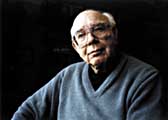
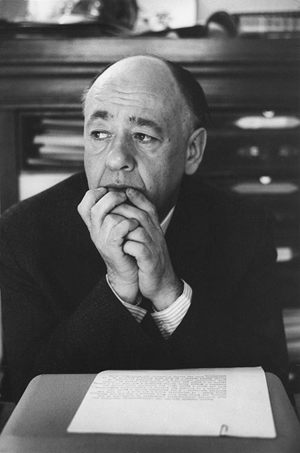
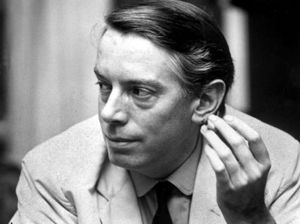
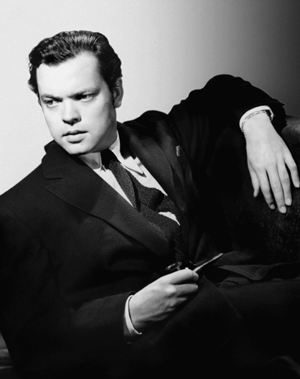
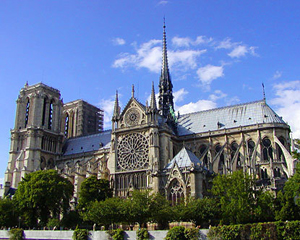
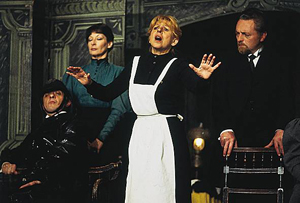
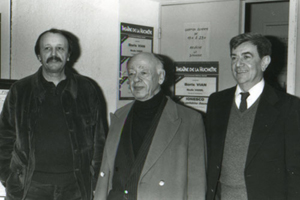
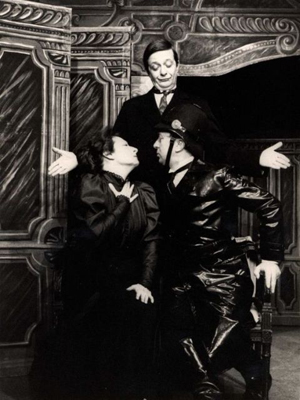
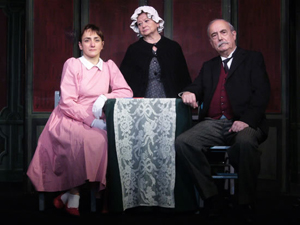
No comments:
Post a Comment